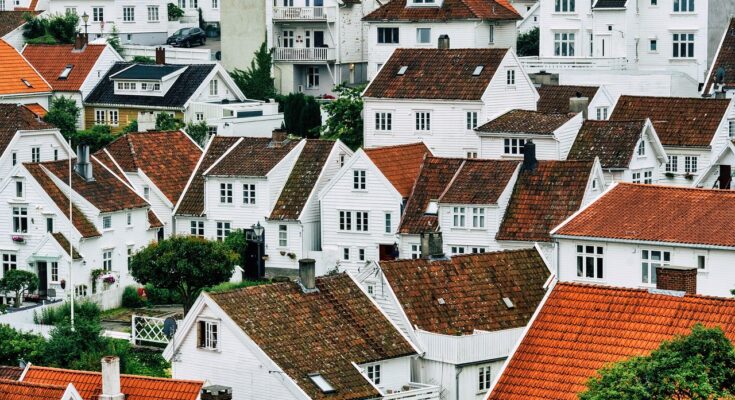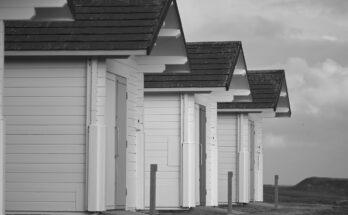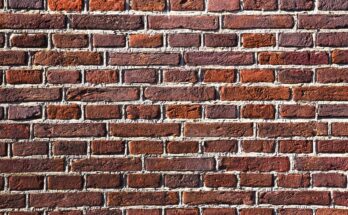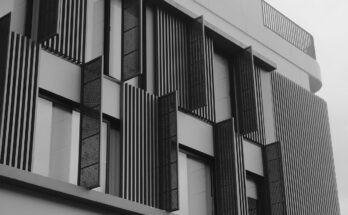ZonaJakarta – Cladding has come a long way from being just the outer shell of a building. In 2025, it’s a big part of how a home looks, how it performs, how much it’s worth—and even how it stands up to climate shifts. Whether you’re building a house from the ground up, giving your property a facelift, or planning a long-overdue renovation, the material you choose to wrap your walls in is more than just decoration. It’s an investment.
This year, homeowners and architects are leaning into smarter choices—materials that can withstand the elements, reduce maintenance headaches, and elevate the design game.
So, what’s hot in 2025? Let’s break down the five most in-demand cladding materials dominating the market.
1. Fiber Cement: The Tough All-Rounder That Keeps Winning
Fiber cement continues to hold its place as the dependable go-to for homeowners and builders alike. It’s a composite material made from cement, sand, and cellulose fibers, and it ticks nearly every box—durability, fire resistance, weatherproofing, and aesthetic flexibility.
But what really keeps it popular in 2025 is its ability to adapt. Today’s fiber cement boards can mimic wood grain, stone textures, or even smooth, minimalist panels. Homeowners can get the look of a luxury material without paying luxury prices—or signing up for exhausting upkeep. Fiber cement resists mold, termites, and rot, which is a major draw in humid or unpredictable climates.
Architects also love it for how clean and crisp it looks once installed. It works with just about any home style, from farmhouse to ultra-modern, and with new color-coating technologies, the finishes are more fade-resistant than ever.
2. Metal Cladding: Sleek, Strong, and Suddenly Everywhere
Metal cladding isn’t new, but it’s exploding in popularity this year, especially in residential design. Think less warehouse and more cutting-edge architecture—2025’s metal-clad homes are sleek, sharp, and seriously eye-catching.
Materials like aluminum, zinc, and coated steel are being used not just for commercial buildings but also for family homes, townhouses, and even cabins. Their popularity comes down to two things: durability and style. Metal panels hold up against fire, moisture, and pests, making them ideal for harsh environments. They’re also incredibly low-maintenance—most only need an occasional hose-down.
On the design side, metal offers a clean, minimalist edge that’s become a defining look of the decade. Homeowners are gravitating toward matte finishes in bold colors like charcoal, terracotta, or olive green, which are now easier to find thanks to improved powder coating and anodizing techniques. Some panels are even designed to weather naturally, developing a rich patina over time for a more organic look.
3. Brick Slips: Classic Style, Modern Solution
There’s something undeniably comforting about the look of brick—it’s timeless, grounded, and full of character. But traditional bricklaying is expensive, heavy, and labor-intensive, which is why many are turning to brick slips in 2025.
Brick slips are essentially thin cuts of real brick—lightweight yet authentic in texture and tone. They’re especially popular for renovations and retrofits, allowing homeowners to get that traditional charm without ripping apart the structure. They’re also much quicker to install, which means lower labor costs and shorter project timelines.
What makes brick slips such a strong contender this year is their blend of old and new. They’re being used on everything from restored urban terraces to contemporary country homes. Many people are mixing them with other materials like timber or fiber cement to create interesting contrasts and layered textures.
4. Composite Timber: The Natural Look Without the Natural Headaches
For people who love the look of wood but don’t want to deal with warping, cracking, termites, or constant staining, composite timber is the sweet spot. It’s made from a mix of recycled plastic and wood fibers, offering the beauty of timber with the toughness of modern engineering.
This year, composite cladding is making a big impression. Thanks to better manufacturing techniques, the boards now come in ultra-realistic finishes with fine wood grain textures and deep, rich colors. Many are indistinguishable from the real thing until you get up close—and even then, you’ll appreciate the fact that there’s no need for annual oiling or sealing.
From rustic-style homes in the countryside to sustainable tiny houses and modern suburban builds, composite timber is being used to bring warmth and texture without the usual maintenance woes. Plus, because many brands are made from recycled materials, it’s a solid option for eco-conscious homeowners.
5. Natural Stone Veneers: Timeless Elegance with a Lighter Touch
If you want to make a statement with your home exterior, stone is hard to beat. But hauling in full-size stone blocks and laying them by hand? Not exactly budget-friendly or time-efficient. That’s where stone veneers come in—real stone, just sliced thinner and smarter.
Natural stone veneers have become increasingly popular in 2025 for people chasing that high-end, architectural look without the cost or weight. Whether it’s slate, limestone, sandstone, or granite, these thin stone layers are applied over structural surfaces like tiles, offering the same visual impact with much easier installation.
They’re being used not just on entire facades, but also for accents—entryways, outdoor fireplaces, pillars, and even internal feature walls. The result is an organic, luxurious look that adds texture and depth, while also increasing a property’s value.
The Bigger Picture
Behind all these cladding trends is a larger shift: people are designing for the long haul. In a world facing rising energy costs, unpredictable weather, and shifting housing markets, homeowners in 2025 are investing in materials that do more than just look good.
They want exteriors that insulate better, last longer, and won’t turn into money pits down the line. And as manufacturers respond with smarter, greener, and better-looking materials, the choices keep getting better.
Whether you’re planning to build, upgrade, or simply dream for now, these five cladding options are leading the way—offering style with substance, and timeless appeal with future-ready performance. (*)




